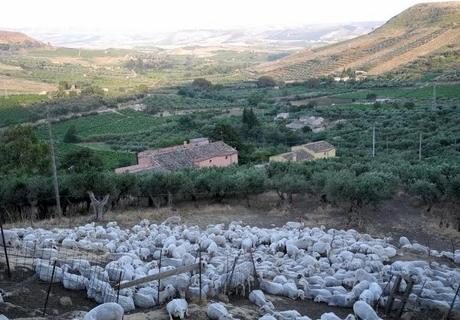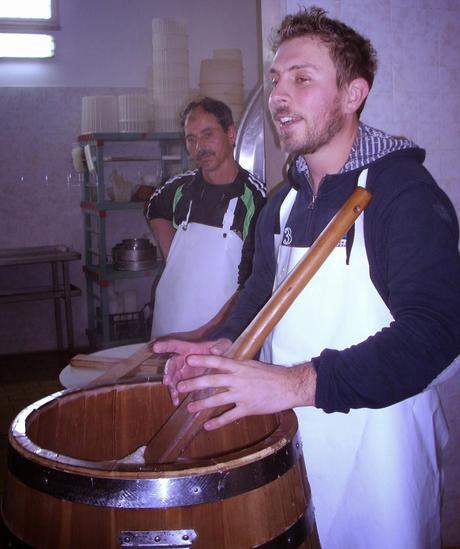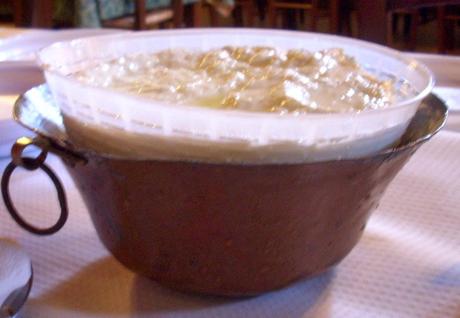I recently visited Sicily as the guest of Cronache di Gusto—an online magazine about food and wine. One word describes the people I met: passion. Passion for the island, passion for the food and wine, passion for their work, passion for the way of life. During the next several weeks, I will be writing from time to time about how the Sicilian people revealed that passion to me.
 The Cucchiara family has been making cheese in the Belice Valley near Salemi, Sicily, for five generations. The newest member of the team, twenty-six-year-old Baldo Cucchiara, began hanging around the cheese-making shed at the age of five. Today, he works beside his father Salvo and uncle Liborio to produce, among other cheeses, Vastedda del Belice.
The Cucchiara family has been making cheese in the Belice Valley near Salemi, Sicily, for five generations. The newest member of the team, twenty-six-year-old Baldo Cucchiara, began hanging around the cheese-making shed at the age of five. Today, he works beside his father Salvo and uncle Liborio to produce, among other cheeses, Vastedda del Belice.The Vastedda del Belice is protected by Italian and European laws which ensure that only cheese made from sheep’s milk produced in the valley using traditional methods can be identified with that label.

Father Salvo Cucchiara Watches Son Knead Vastedda
A completely organic cheese, the Vastedda del Belice from the Cucchiara brothers is made from milk from about 500 sheep which feed on grass and are milked by hand. The family continues to use the traditional method of making this cheese. First, rennet from a sheep’s stomach is mixed with the fresh milk. This first cheese is allowed to solidify in round forms. The cheese is then cut into slices, mixed with hot water, and kneaded with a wooden paddle. This kneading process stretches the cheese, eliminating any holes and producing a smooth texture.Once the cheese has been kneaded, it is rolled into balls for the final formation. The day I visited the farm, Liborio squeezed out the balls and handed them over to Salvo and Baldo. These two quickly weighed out by hand 500-gram pieces, returning the leftover bits to Liborio. They didn’t use a scale but relied on their experience to gauge the weight. They flattened the balls and placed them in a ceramic saucer to harden. They worked quickly, forming about three dozen cheeses in less than ten minutes while fielding questions from eight writers.
On the day I was there, they were also making fresh ricotta. I arrived just in time to see the final step when the cheese is scooped into the plastic baskets. When the cheese is first transferred to the baskets, it is quite liquid. Initially, the whey drains away quickly. Over time, as the product is shipped to vendors, the drying out process slows down so that by the time I buy a good sheep’s milk ricotta at my local market, it will have a semi-solid texture.

The Still-Warm Ricotta in a Copper Pot To Collect the Whey
Once we had viewed the cheese-making, our driver began rounding up my group to leave. “Wait,” called Salvo. “You may leave when I tell you.” He then led us to another building with tables. Here, the Cucchiaras set out several cheeses—including that still-warm ricotta—salami, olives, sun-dried tomatoes, homemade bread, and wine. Delicious.Baldo, the next generation, is passionate about his calling. His eyes reflect joy as he forms the cheese. Asked by a journalist if he is satisfied. “Oh, yes,” he said. “I went to a classical high school, but all I really wanted was to make cheese.” The only thing he wants now is to get married and start a family. And I suspect he hopes to continue the tradition that his family started in 1870.
